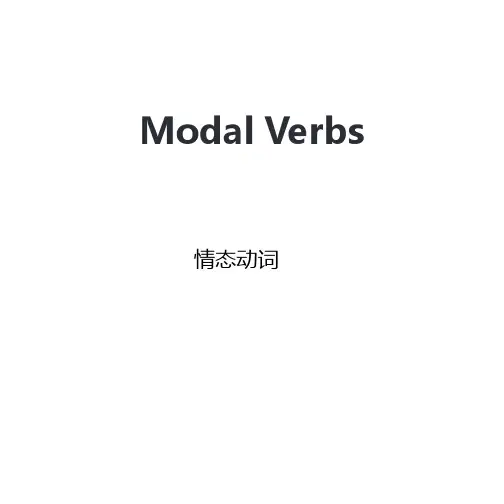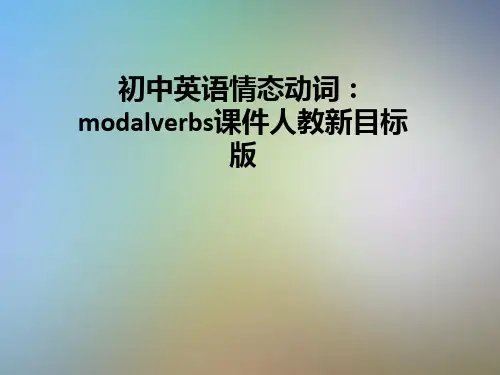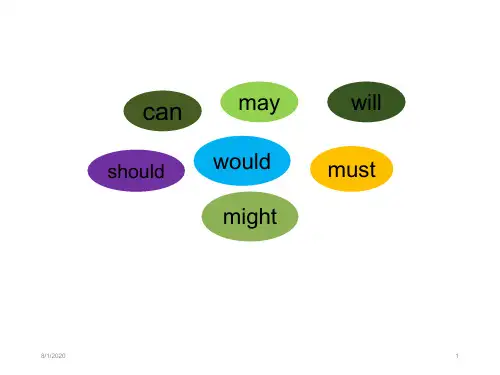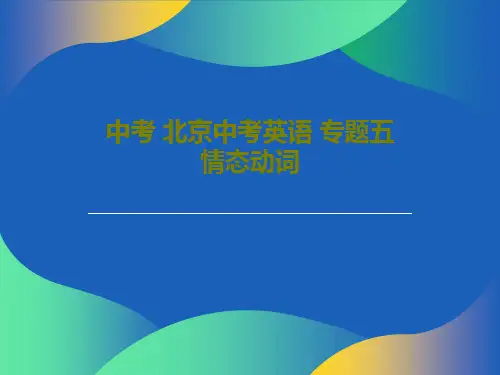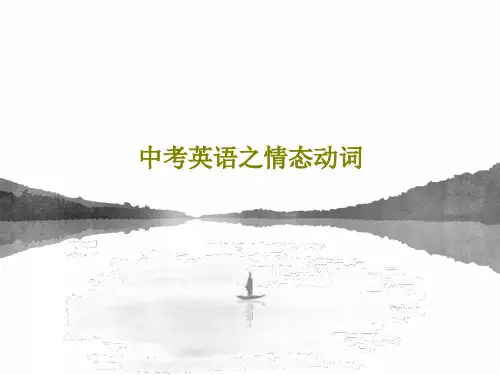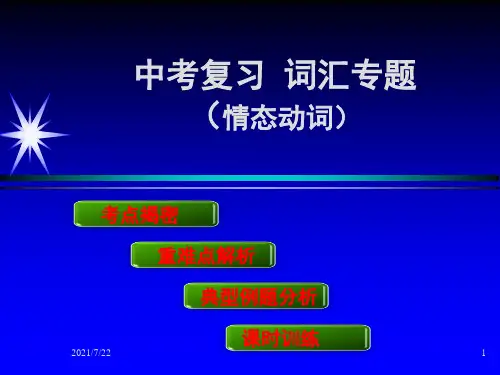• 1). 我们以前一定在哪里见过面。
• 2). 你昨天一定看到她了,对不? •You must have seen her yesterday, didn’t you?
7
•三点说明
•1、情态动词 + v 表示对现在或将来动作的猜测。 • 情态动词 + have + p.p表示对过去动作的猜测。
•2、情态动词的过去式与原形相比,多点礼貌,少点冒昧, • 语气更为委婉。
•其形式为:must + have +p.p •Eg. The road is wet. It must have rained • last night.
6 •must的用法
1. must 表示推测时,其反意疑问句应根据动词的实 际时态而变化。如:
• 1). He must have a car now,_•_d_o_e_s_n_’_t _h_e__?
have
to.
•④
NeedIfinishit•Yes, you must. now?•No, you needn’t.
8
•典型错误
•1. He mustn’t be in the classroom. ( •Can’t ) •2. You might leave the bag on the desk. •(might have left )
•3.情态动词在一般疑问句中的回答: •① Can you sing? •Yes, I can.
•No, I can’t.
•② May I come in?•Yes, you may.
•No, you mustn’t/you can’t.
•③
Must
I
hadn’t
